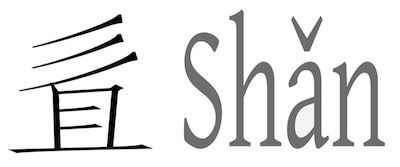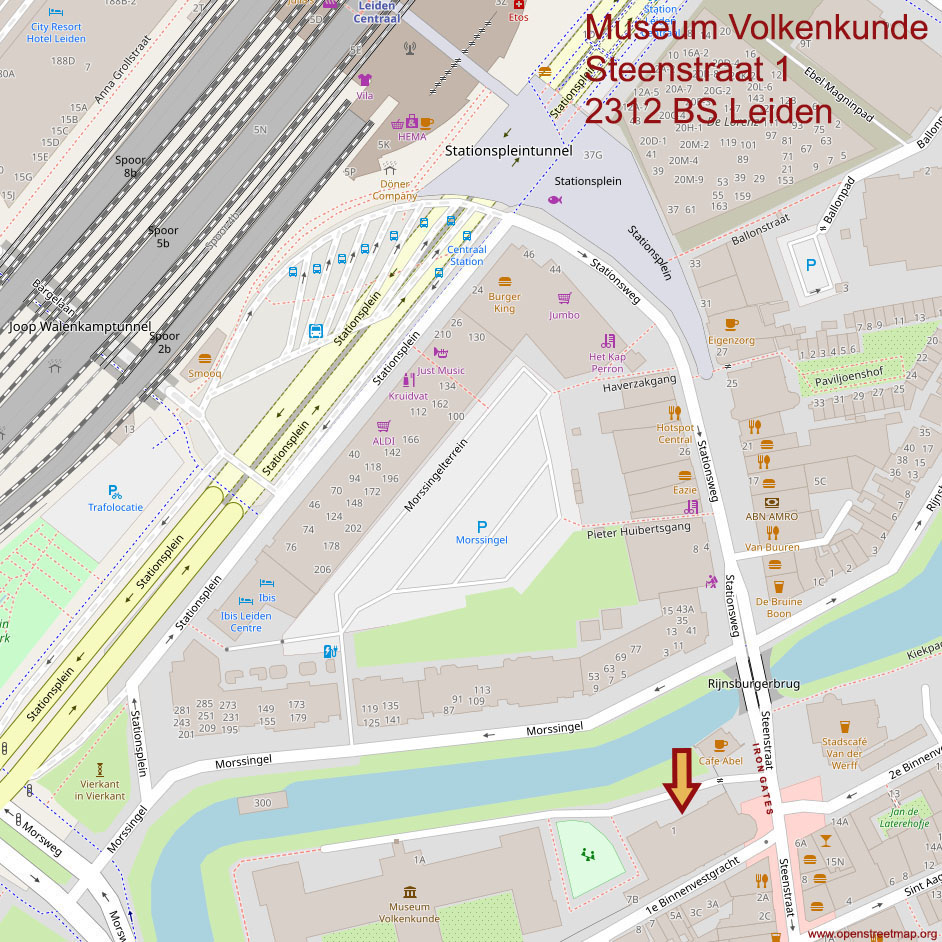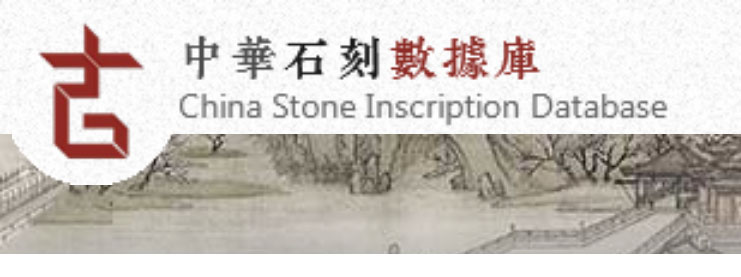Sessions
Block 3
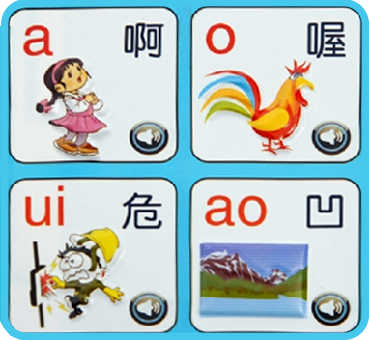 Intro / Speaking and writing in China
Intro / Speaking and writing in China
Writing is – in most definitions – connected with language. But if language travels through sound waves and writing is a visual medium, then how do these two domains interact?
Writing systems displays intricate and diverse ways of mapping the sounds and meanings of language to a visual format.
Once written down, some elements from speech are preserved and some are lost. And vice versa: the visual signal may transmit components from the spoken original, but also features which are absent in spoken form.
In this first session, we will explore how language comes to us through the Chinese script – and how fast such modes can change.
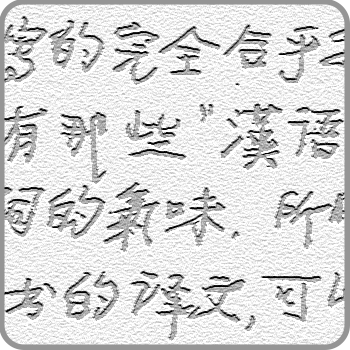 Texts
Texts
-
Chao (1980)
趙元任 Yuen Ren Chao, 序 "Xù" [Preface]
In: 趙元任 Yuen Ren Chao, 中國話的文法 Zhōngguóhuà de wénfǎ [A grammar of spoken Chinese].
香港 Hong Kong: 中文大學出版社 Chinese University Press, 1980, frontispiece.
Translation of Yuen Ren Chao, A grammar of spoken Chinese.
Berkeley: University of California Press, 1968. Translated by 丁邦新 Pang-Hsin Ting.
 Chao's 序 will be handed out and introduced in class. No preparation is needed for this text.
Chao's 序 will be handed out and introduced in class. No preparation is needed for this text.
-
Norman (1988)
"The Chinese script"
In: Jerry Norman, Chinese.
Cambridge: Cambridge University Press, 1988, Chapter 3 = pp. 58-82.
Availability at Leiden:
- from the Asian Library, on the linguistics handbooks shelves;
- as an e-book, through the University Library catalogue
Highly recommended: a "must-read" classic.
– My advice: get your own copy!
Study suggestions
Time management: do not underestimate assignment #5 below. It may involve more reference checking than would seem at first glance.
Assignments
![]() Please make sure you prepare your answers to all questions & assignments in writing.
Please make sure you prepare your answers to all questions & assignments in writing.
1. Read the assigned chapter from Jerry Norman's Chinese.
In preparing this text, please check that you are familiar with
Note down any difficulties you may have in reading the text, and bring your notes to class.
technical terms in English and in Mandarin (including the corresponding Chinese characters);
names and dates for dynasties, historical periods and historical figures;
geographical designations.
2. On p. 58, the origins of Chinese characters are outlined.
a. In English, do you know a term for the study of writing systems? And in Mandarin?
b. Can you name (at least) three families of scripts, i.e. writing systems of the world which (as far as we know) developed independently?
c. Is the oracle bone script the undisputed precursor of the modern Chinese character script?
d. Can you name (at least) seven different Sinitic languages?
Please give the English and in Mandarin names for each of these, as well as the Chinese characters (简体 & 繁體) for each name.
e. What is the oldest Sinitic phase which has been reconstructed in phonological detail? Please give (approximate) dates.
f. Is the language encoded by the oracle bone script the undisputed precursor of the modern Sinitic languages?
3. The ideographic notion, i.e. the notion "that Chinese characters in some platonic fashion directly represent ideas rather than specific Chinese words" may be "patently absurd" (pp. 60-61), but it is immensely popular nonetheless.
Find a reference (in print or online) which clearly demonstrates, or is clearly based on, the ideographic notion.
a. From this source, note down one specific statement or claim demonstrating this notion.
b. Formulate a counter-argument against this specific statement or claim, basing yourself (at least in part) on the information in section 3.1.
4. Pages 67-69 introduce the 說文解字.
In one or two sentences, summarize the significance of this work
for the study of the Chinese script; and
for Chinese lexicography.
5. On p. 76, please study Table 3.6 carefully, including the notes on p. 77.
a. Can you read all characters listed in the Table?
For your reference: see e.g.
- 國際電腦漢字及異體字知識庫 / International Encoded Han Character and Variants Database.
- 汉字全息资源应用系统
- Chinese Etymology / 字源
- 小學堂文字學資料庫
- 康熙字典網上版
- ...or: find your own, and bring your suggestions to class!
b. Can you give more recent examples of individual characters created in order to "adapt[...] the traditional script to the modern language" (p. 75)?
6. In note 8 of p. 81, please define the term homophonous in your own words.
7. In note 10 of p. 82, it is noted that "the alternation of words beginning with sh and r in a single phonetic series is unusual".
Find another example of this unusual type of alternation in the traditional character script.
8. In the same note 10, consider the example of ràng 'to allow' again.
Note that "ràng" is italicized, but " 'to allow' " is placed within single quotation marks.
a. In your own words, formulate the difference between these typographical conventions.
Which linguistic units do they represent?
b. Can you list other typographical conventions, representing other linguistic units?
For each unit, give English and Mandarin names, as well as the Chinese characters (简体 & 繁體).
c. Is there also a typographical convention which represents items as orthographic units, i.e. as the written forms of a script?
 Fig02.jpg) Language and script (1):
Language and script (1):
The structure of Chinese characters
The Chinese script has been studied for millennia, both in and outside China, giving rise to a bewildering set of principles, approaches and perspectives.
This week, we are covering some groundwork in terms of data, units of analysis, methods and terminology.
We will also check on the logistics of this course: finding your way around the relevant catalogues, the course reserves shelves and the library collections.
 title page red.jpg) Texts
Texts
-
Dougherty e.a. (1963)
"Introduction"
In: Ching-yi Dougherty, Sydney M. Lamb & Samuel Martin, Chinese character indexes.
Berkeley: University of California Press, 1963
"Introduction" = Volume 1, pp. v-xxxi.
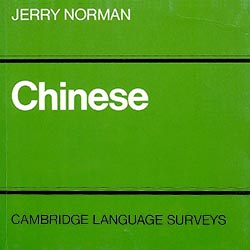
-
Norman (1988)
"The Chinese script"
 see Session 1 – new access option listed
see Session 1 – new access option listed
Assignments
![]() Please make sure you prepare your answers to all questions & assignments in writing.
Please make sure you prepare your answers to all questions & assignments in writing.
(a) Next week (in session 3), we will be reading a text in Chinese.
For now, if you cannot read modern written Chinese:
- Prepare to buddy up!
- Please make sure to contact classmates now, and to set a date & time to prepare next week's text together.
- If needed, make use of the Blackboard "Course Tools" option to send group emails.
(b) Meanwhile, here is some of the feedback I received since Session 1:
- Thanks to Mara for pointing out that Norman's linguistics classic Chinese is also available as an e-book [info added 8 Feb 19]
- Thanks to Valéri for pointing out access problems with the 國際電腦漢字及異體字知識庫 database [options added 8 Feb 19]
On Chao (1968):
10. Bibliography
On the basis of the University Library catalogues, inventorize all editions of Y.R. Chao's Grammar of spoken Chinese. For each title,
(a) Note place & year of publication, name of the publisher and other relevant details;
(b) Check which transcription for Mandarin has been used;
(c) Check if the work is available on the Asian Library's open shelves;
(d) If (c) = yes, find one example of an empty square representing a spoken expression without a character and note down the page number.
On Norman (1988):
11. Review
of last week's text & assignments:
- Read the assigned text
- Review assignments 1 through 8
- Note down any difficulties and bring your notes to class.
On Dougherty e.a. (1963):
- n/L = left column on page n
- n/R = right column on page n
12. Read the text, note down any difficulties you may have in reading the text, and bring your notes to class.
13. In the Preface, check which personal names ring familiar.
14. On p. ix/L,
a. What is meant by "the standard pronunciation(s)"?
b. What is the difference between transcription, "transliterations systems" and "romanization"?
15. On p. x/R, in Figure 2, check and see if you are missing any details.
16. On p. xi/L, character #5536
is shown twice in Figure 3.
Now compare character #1788.1 复 in Figure 2. What is the reason that this character is not shown twice?
17. Make sure you are familiar with the calligraphic terminology on pp. xi/R-xii/L.
In one sentence, describe the relevance of these terms are in this context; also compare assigment #19 below.
18. Check the Rules on pp. xix-xxi and the Concordance on pp. xxii-xxix. And/or look up any online resource on the Gwoyeu Romatzyh transcription.
On the basis of this information, see if you can read (pronounce & translate) the Chinese book titles listed on p. xxx.
Be prepared to cite these titles by reading them out aloud in class.
19. On the basis of your reading of this Introduction, can you formulate a technical definition for the term Chinese character as implied here?
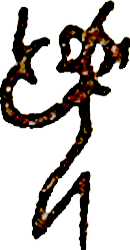 Corresponding with Heaven: The early scribes
Corresponding with Heaven: The early scribes
At the dawn of history, humans were fully modern in the anatomical and in the neurological sense. Their brains, and their languages, were as complex and as diverse as they are today. There were just fewer speakers.
Even at this early stage, the world must have been teeming with linguists. We know nothing about their theories, but their legacy remains with us today, for they created the first writing systems.
The art of writing was invented more than once, and the puzzle how to represent sound and meaning in graphs has been solved in very different ways. The Chinese case offers us a rare insight in the tenacity of some cultural artefacts.
This week, we will:
study the material culture which produced a script whose characteristics have survived into the digital age;
consider the challenges of interdisciplinary studies; and
learn how to introduce a text dating back more than three millennia to a modern audience.
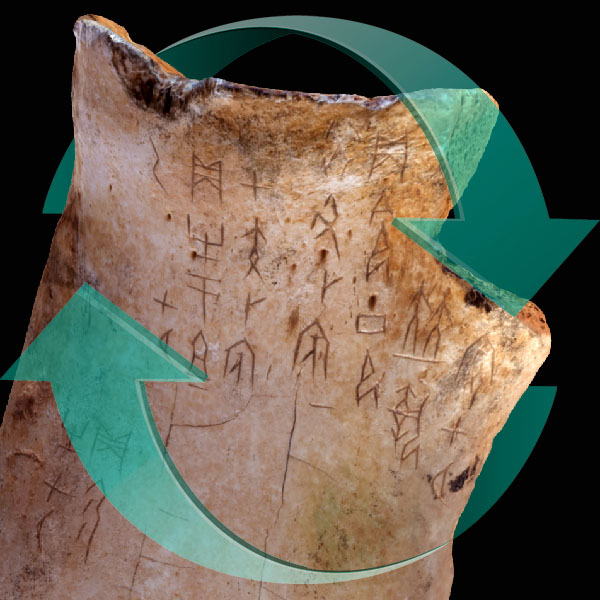 |
Texts
-
Keightley (1985)
-
Preamble ["Puk!"]
-
Chapter 1, "Shang divination procedures"
-
Chapter 2, "The divination inscriptions"
David N. Keightley, Sources of Shang history: The oracle-bone inscriptions of bronze age China.
First edition 1978; paperback edition, with corrections, Berkeley: University of California Press, 1985.
Pp. 1-2 (Preamble), 3-27 (Chapter 1), 28-56 (Chapter 2).
 For Chapters 1 and 2, your reading assignment does not include the copious footnotes (which take up >50% of the text).
For Chapters 1 and 2, your reading assignment does not include the copious footnotes (which take up >50% of the text). Available in the Leiden Asian Library: see the dedicated Course Shelf, number ALCRS052, for this course.
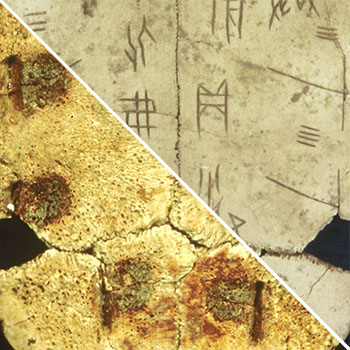 Click left \ right to enlarge
Click left \ right to enlarge
Source: Lindqvist, China: Empire of living symbols (2008) -
-
Lǐ (1989)
"月㞢食"
李圃 Lí Pǔ, selection and commentary, 甲骨文選注 Jiágǔwén xuǎn zhù [Oracle bone writing: An annotated anthology].
上海 Shanghai: 古籍出版社 Gǔjí Chūbǎnshè, 1989,
Section 1, pp. 1-8.
Available in the Leiden Asian Library: see the dedicated Course Shelf, number ALCRS052, for this course.
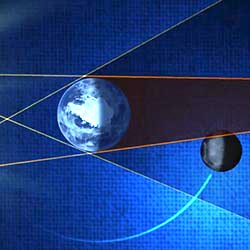 Background
Background
-
NASA (2011)
NASA Goddard Space Flight Center, "Lunar eclipse essentials"
Uploaded to Youtube on 8 June 2011.
-
Djamouri (1992)
Redouane Djamouri, "Un emploi particulier de you (有) en chinois archaïque"
Cahiers de Linguistique Asie Orientale, January 1992, Volume 21(2), pp. 231-289.
A PDF of this article is also available online at Persée.
-
Thurston (1994)
Hugh Thurston, "The Chinese"
In: Hugh Thurston, Early astronomy. New York: Springer, 1994, pp. 84-109.
Leiden University Library code: GORLAE ASTRON QB016 203.
Development notes: For future runs of this course
Source to be considered
– On the sexagesimal cycle:
Michel Ferlus, The sexagesimal cycle, from China to Southeast Asia , from China to Southeast Asia. 23rd Annual Conference of the Southeast Asian Linguistics Society, May 2013, Bangkok, Thailand.
Reading notes
20. In case you need help with the Wade-Giles spelling:
– for systematic guidelines & conversion, see Appendix D in A grammar of Mandarin; or
– for ad-hoc conversion, see e.g. the Chinese Text Project's transcription-conversion tool.
21. In case you need help with the sexagesimal cycle:
– for systematic guidelines & conversion, see Tables 9.3 & 9.4 in A grammar of Mandarin; or
– for ad-hoc conversion, see e.g. Wikipedia's Stem, Branch and Stem-Branch tables.
22. "Wu Ting's reign" (Keightley 1985: 1):
Wikipedia has a list of Shang Kings.
Assignments
23. Individual items
Cheyann: Your backlog assignments for week 1(written answers to Assignments 1 through 8) are due this Friday, 15 Feb 19, at 1:00pm.
Please note the format requirements for written assignments
The assignments for this week's session are below.
![]() A friendly reminder: make sure to prepare all your answers in writing, in English!
A friendly reminder: make sure to prepare all your answers in writing, in English!
– Keightley (1985):
24. Read the assigned texts from David Keightley's Sources.
In preparing this text, please check that you are familiar with
- technical terms in English and in Mandarin, including the corresponding Chinese characters,
– e.g. "hsin-wei, eighth day of the week";- names and dates for dynasties, historical periods and historical figures
– e.g. "Wu Ting";
- geographical designations
– e.g. "the powerful Ho".
For hints and suggestions, please consult the Reading notes.
Note down any difficulties you may have in reading the text, and bring your notes to class.
25. In the interactive scan and in the illustration above, please identify the "series of hollows" (Keightley 1985: 18) and "the characteristic pu 卜-shaped crack" (ibid.).
26. On p. 50, it is explained that "[a]s a rule, the inscriptions appear to have been carved above, or to the side of, the pu cracks and on the side of the crack which lacked the transverse branch".
Can you confirm this general rule for our "月㞢食" text?
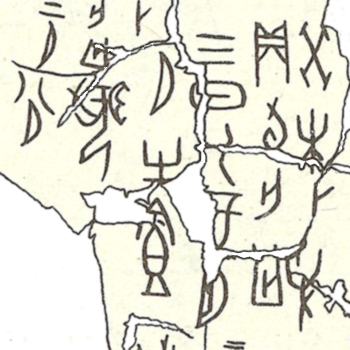
– Lǐ (1989):
27. On the basis of 李圃 Lí Pǔ's helpful notes, read and prepare an English translation of the oracle bone text "月㞢食".
Please note down any difficulties encountered in Lǐ's commentary.
28. Oracular text, line 4, character 2:
In your own words, define the relationship between the character 㞢 and the character 有.
You should minimally formulate what you know on the basis of Pǔ's comments, combined with your own experience.
In this connection, also compare the comments on character adaptations from our first session.
For more background, you may consult Djamouri (1992).
FYI
29. In Session 2, Lorenzo's question prompted a brief explanation how textual information used to be stored digitally on paper tape.
Here are some suggestions for further reading & viewing:
– [VIDEO] Binary counter (百聞不如一見;-)
– the Baudot-Murray code
– the ASCII code
– the 国标 Guóbiāo code
– [VIDEO] Five-hole paper tape: writing and reading digital data
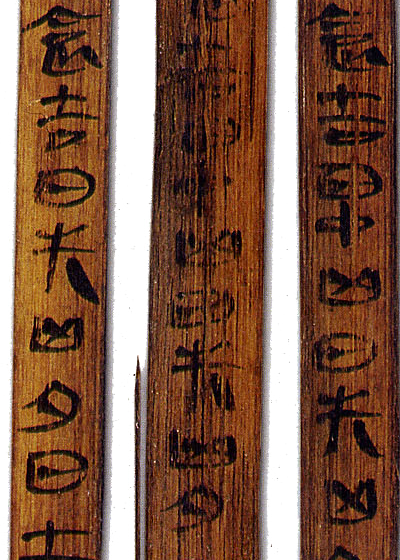 Doing right by a script: The tools of lexicography
Doing right by a script: The tools of lexicography
In Session 3, we saw how the invention of writing was embedded in technological and economic change.
Today, we will explore early advances in Chinese lexicography against the backdrop of philosophical and political developments In Qín 秦 and Hàn 漢 times.
This session will consist of two parts:
- This weeks' centerpiece:
An unconventional look at the establishment of writing conventions
- Looking ahead:
Exploring possibilities for you term paper
Texts
-
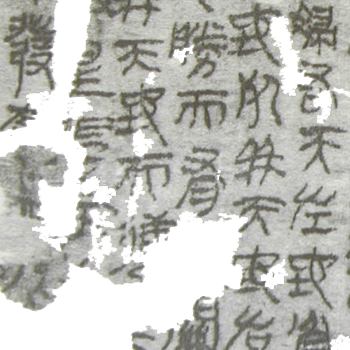 Galambos (2006)
Galambos (2006) -
"Shuowen Jiezi"
Chapter Two, "The Qin and Han creation of the standard"
Imre Galambos, Orthography of early Chinese writing: Evidence from newly excavated manuscripts, pp. 31-63.
Budapest: Eötvös Loránd University, Department of East Asian Studies, 2006.
A PDF of this book is available online on Imre Galambos' page
....or use the direct link to this title.
From Wikipedia: The free encyclopedia
 |
Source: Archive.org |
-
許 Xǔ (100)
許慎 Xǔ Shèn, 說文解字 Shuō wén jiě zì [Discussion of simple characters and analysis of complex characters]
Edition: 说文解字: 附检字 Shuō wén jiě zì: Fù jiǎn zì [Discussion of simple characters and analysis of complex characters: With a character index].
北京 Peking: 中華書局 Zhōnghuá shūjú, 1963.
East Asian Library number: SINOL. 5093
Available in the Leiden Asian Library: see the dedicated Course Shelf, number ALCRS052, for this course.
Assignments
Hand-in Assignment #1
Imagine that:
- the five fragments pieced together to form last week's oracle bone were shown in a museum exhibition, and
- you were asked to write the accompanying object label, intended for an English-speaking museum audience.
On the basis of your work for last week's assignments, prepare a text which could serve as that object label. This text should minimally include:
- information about the age and the provenance of the object;
- short remarks about the type of text, and the language of the inscription;
- a full translation of the "月㞢食" text.
Hand in your work, printed on paper, at the beginning of class on 25 February, or in my pigeonhole beforehand.
Please note the format requirements.
Small is beautiful: maximally one page (A4).
30. Individual items
Valéri: Your backlog assignments for week 3 (written answers to Assignments 24 through 26 & 28) are due this Friday, 22 Feb 19, at 1:00pm.
Please note the format requirements for written assignments.
– This week's centerpiece:
31. Read the first two texts:
- Galambos' Chapter Two, "The Qin and Han creation of the standard" and
- the Wikipedia article "Shuowen Jiezi".
Note down any difficulties you may encounter in these two texts, and bring your notes to class.
We will discuss your questions and remarks on a page-by-page basis.
32. The third title is a modern reprint of the 說文解字 Shuō wén jiě zì.
(a) Have a good look at this book, which is currently available from the course reserve shelves in the Leiden Asian Library.
(b) Check that you understand how the work is organised.
(c) Find the characters
,
,
and
in this dictionary.
For each of these four characters, write down
- the page number for the entry in this modern edition
- the Shuō wén jiě zì radical
- the dictionary's definition of the characters, and
- an English translation of this definition
– Looking ahead:
33. Prepare some notes and ideas for your term paper.
Make a list of possible observations and, for each observation, one or more research questions.
Please bring your notes to class for discussion.
You can read more on the relevance (and art) of observation here.
...and the encore
34. What is this?
–Thanks to Koos Kuiper for contributing this example
35. Please comment!
–Thanks to Fresco Sam-Sin for contributing this example
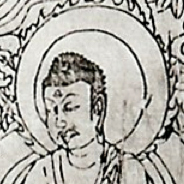
| "By far the largest corpus of early Chinese manuscripts available to us today is the huge cache found by Sir Aurel Stein and others at Dunhuang in far western China in the early years of the twentieth century." Peter Kornicki, "Bluffing your way in Chinese" (2008: 2) |
Diamonds from Sand City: Dūnhuáng's linguistic treasures
Since times immemorial, the desert trails connecting India with China were busily travelled by merchants and monks, artists and adventurers.
This week, we zoom in on the oasis town of Dūnhuáng 敦煌, a.k.a. 沙州 Shāzhōu 'Sand City', whose Mògāo 莫高 caves have been a Unesco World Heritage Site since 1987.
One of the first scholars who realized that this site harbored a priceless linguistic time capsule was the Hungarian-born Briton Stein Márk Aurél, later Sir Marc Aurel Stein (1862-1943).
Initially attracted to Dūnhuáng by its Buddhist art, Stein chanced upon a cave full of manuscripts and prints in 1907. Today, the study of Dūnhuáng documents remains a fascinating multi-disciplinary field.
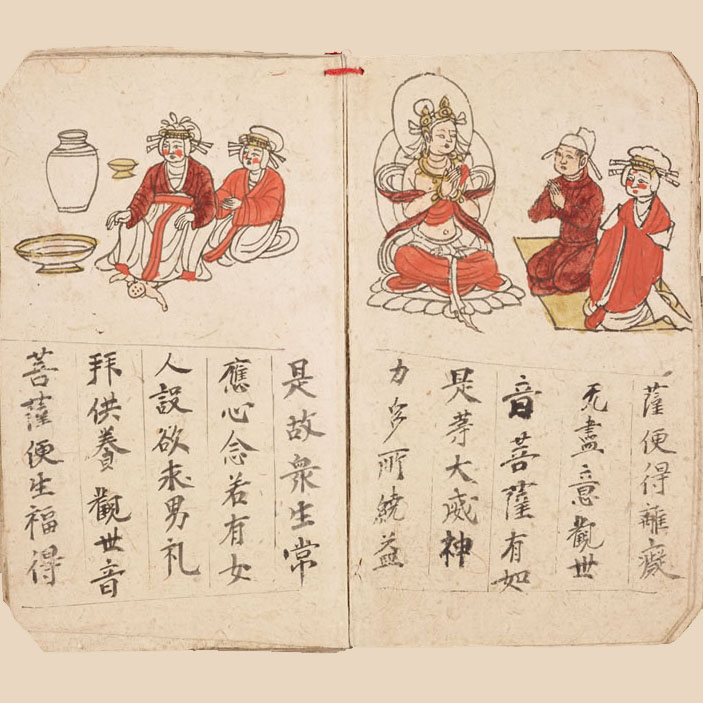 Texts
Texts
-
Whitfield (2009)
Susan Whitfield, "Stein's Silk Road legacy revisited".
In: Asian affairs, volume 40, no. 2, 2009, pp. 224-242.
Available as an e-publication from the Leiden University Library.
Volume II, Texts and
Volume IV, Plates
Aurel Stein, K.C.I.E., Serindia: Detailed report of explorations in Central Asia and westernmost China
Oxford: Clarendon, 1921.
Availability
(1) Leiden University Library's Special Collections
Due to their age, these two volumes are not accessible as "Course Reserve" items.
You need to got to the Special Collections Reading Room to consult these works. This reading room is on the same floor as the Asian Library, but two corridors across.
Special Collections are making these volumes available for students of this Sinographics course. Just show your library card at the desk and remind library staff that both volumes are reserved under my name.
(2) Digital edition
Click on the large photo's on the left hand side to access each volume
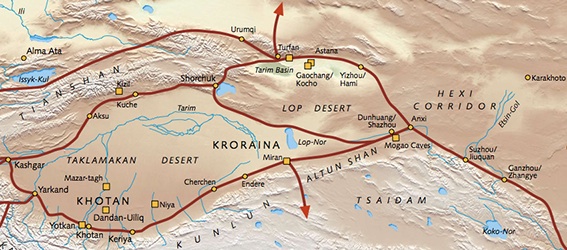 Reading notes
Reading notes
Whitfield (2009):
36. The map shown on p. 225 is available online as a scalable color map from the British Library.
Background
-
Fāng (2014) [audio]
方廣錩 Fāng Guǎngchāng, "敦煌遺書數字化的現狀, 基本思路, 目前實踐及設想 / Status, basic concepts, current practice and tentative plan for the digitization of Dunhuang manuscripts"
Opening keynote lecture, 6 September 2014, of the "Prospects for the study of Dunhuang manuscripts: The next 20 years" Conference held at Princeton University.
(If you want, you can click "Download video" inside the web-player window to create a local copy of this lecture. Note, however, that the recording has audio only.)
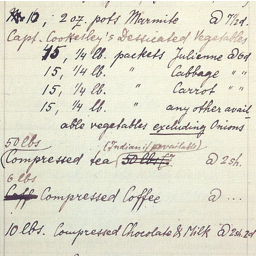
Whitfield (2004)
Susan Whitfield, Aurel Stein on the Silk Road
London: British Museum Press, 2004.
Published at the occasion of the British Library exhibition "The silk road: Trade, travel, war and faith".
Includes a glossary.
Available in the Leiden Asian Library: see the dedicated Course Shelf, number ALCRS052, for this course.
International Dunhuang Project, "Conserving the Diamond Sutra".
Uploaded on Youtube on 27 May 2009.
Fascinating footage on the multi-disciplinary challenges of preserving the world's oldest dated printed text.
More video's from the IDP are available at their Youtube channel
Peter Kornicki, "Bluffing your way in Chinese".
Sandars Lectures in Bibliography,
Cambridge University Library, 11 March 2008.
Assignments
Left over from last week:
– "Doing right by a script", Assignments 32(c) through 35
#32(c) – 說文解字: We will have another look at your translations of these four entries.
With the aid of last week's notes, make sure that these four these items have no more secrets.
We will restrict ourselves to the main text, leaving 反切 fǎnqiè additions and other commentaries for later.
#33 – Term paper preparations
By way of orientation, have a look at this introduction: Writing on language
37. Backlog items
Jur: Your backlog assignments for week 4 (written answers to Assignments 31, 32 and 33) are due this Friday, 1 Mar 19, at 1:00pm.
Please note the format requirements for written assignments.
38. Individual items
Chengcheng: Stein's Volume II: Text notices that the sutra scroll was "in excellent preservation and complete".
Elaborate conservation was undertaken in the years 2003-2010, as shown in a British Library video on the Conservation of the Diamond Sutra.
Now, compare Stein's original picture with the photo taken at the British Museum in the mid-1970s.
Can you point out what type(s) of restoration or conservation work had been performed by that time?
Cheyann: Aurel Stein was not only a trained philologist, but also a skilled archeologist, "recognizing the importance of careful excavation, of stratigraphy and of recording each find's location" (Whitfield 2004: 18).
In two or three sentences, describe the technique of stratigraphy. When did this technique originate?
Chiara: There is a short Chinese text preceding the translation of the Diamond Sutra itself.
What does the first line say?
Jasper: Among the Dunhuang manuscripts, there are detailed drawings of hands held in many different positions.
(a) Find one of these drawings in Stein's Volume IV: Plates.
(b) Do they depict hand positions or hand gestures? What was the purpose of such drawings?
Jur: What is the Chinese term for 'archeology'? And what does it literally mean – morpheme by morpheme?
39. Read Whitfield (2009) and bring your reading notes to class.
We will discuss your questions and remarks on a page-by-page basis.
40. Make a list of all language names mentioned in this text, restricting yourself to languages spoken natively in the areas explored by Stein.
For each of these languages, look up their genetic affiliation (language family, subgroup, branch etc).
For some assistance, try the Linguistic Toolbox at the bottom of this page.
41. In two or three sentences, summarize what Fāng considers to be the major challenge(s) for the digitization of Dunhuang manuscripts today.
42. First, have a good look at Volumes II and V of Aurel Stein's original work of 1921.
In Volume IV: Plates, check that you understand the page numbering system.
On page C of Volume IV: Plates, find the photo of the "printed roll" at the lower half of the page;
on the same page, find Stein's inventory number for this item;
and in Volume II: Text, under the same inventory number, find Stein's detailed description of the item.
Now, establish whether Stein himself realized the historical significance of this particular scroll.
43. The International Dunhuang Project (IDP) has uploaded a high-resolution image of the same scroll, which contains the full Chinese text of the Diamond Sutra.
This webpage includes a digital facsimile edition of the scroll, along with a full English translation of the sutra.
Sanskrit title: वज्रच्छेदिकाप्रज्ञापारमितासूत्र Vajracchedikā Prajñāpāramitā Sūtra
Chinese title: 金剛般若波羅蜜多經 Jīngāng Bōrěbōluómìduō Jīng (note the Mandarin readings for 般 and 若), abbreviated to 金剛經 Jīngāng Jīng
English title: Diamond-Cutter-of-Perfect-Wisdom Sutra, abbreviated to Diamond Sutra
On the IDP page, if you click on "NEXT IMAGE" once,
you will have reached the last line of the printed text, indicating its date of publication. (to see more details, click "LARGE IMAGE")
This line of text is lacking in the IDP translation, but you will find an English translation in the short but useful introduction to the Diamond Sutra by the Silkroad Foundation.
(a) Correct the Silkroad Foundation's English translation of the Chinese date.
(b) Find the name of the emperor ruling the Táng 唐 at the time of publication of this scroll.
(c) Use the Chinese-Western calendar converter provided by the Academia Sinica, Taiwan, to check if the Julian date give by the Silkroad Foundation is correct.
(d) Check if you can tell on what day of the Julian week this Chinese edition of the Diamond Sutra was published.
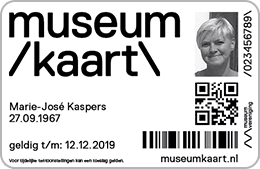 Museum excursion heads-up
Museum excursion heads-up
In Block 4, we will be planning a visit to the depots of the Leiden's ethnography museum: the Museum Volkenkunde.
For this purpose, we need to inventorize which students from or group are in possession of a national Museumkaart.
Please mail me, or tell me in class whether you own one: I am drawing up a list.
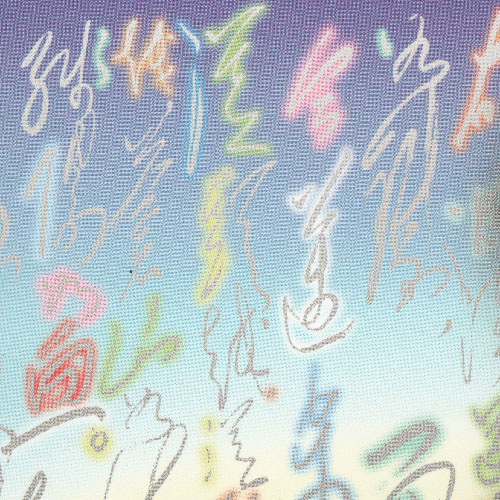
Catching up and looking ahead: Linguistic approaches to sinographics
Over this first semester's block, we have been tackling an abundance of subjects from many different angles. This calls for a moment of reflection; remember that reflection is one of the most powerful instruments in the toolbox of science.
This week, therefore, we will cover some backlog from Week 1 to Week 5, as well as discuss any outstanding issues from these sessions which you may wish to raise.
We will also be look ahead to the tasks before us, first and foremost about the subjects of your term papers.
Texts
-
Writing on language
See <writing_on_language.htm>
-
Murphy Paul (2016)
Annie Murphy Paul, "How to increase your powers of observation".
Time, 2 May 2016
Assignments
44. Individual items
Chengcheng, Chiara: Your backlog assignments for week 5 (written answers to Assignments 38 through 43, printed in my pigeonhole) are due this Friday, 8 Mar 19, at 1:00pm.
Please note the requirements for written assignments.
Left over from last week:
– Whitfield & Stein, assignments 39 through 43
In today's session, we will discuss these assignments first.
45. Read "Writing on language" and bring your reading notes.
We will discuss your questions and remarks in class.
46. Read Murphy Paul (2016) and bring your reading notes to class.
We will discuss your questions and remarks. (and observations ;-)
47. We are returning to the subject of your term papers.
In your notes, check my comments on your assignment #33, and be prepared to report on your progress so far.
Assignments heads-up
On Monday, 25 March (Block 4, Session 1: after the semester break), a first draft of your term paper will be expected.This draft will be assessed as Hand-in Assignment #2.
For general hints on linguistic writing, please consult Writing on language.
Two weeks later, on Monday, 8 April (Block 4, Session 3), you will be expected to deliver a (very short!) oral report on the subject of your term paper.
This report will be assessed as your Oral presentation.
As announced, in order to help you plan ahead, you can prepare draft versions of your term paper at any time:
- I will return your work with my comments
- This list of proofreaders' marks may assist you in reading my comments
- In case you wish to discuss my comments, please make an appointment
Please allow two days between handing in any draft and your appointment.
...and the encore
48. What is this?
Block 4
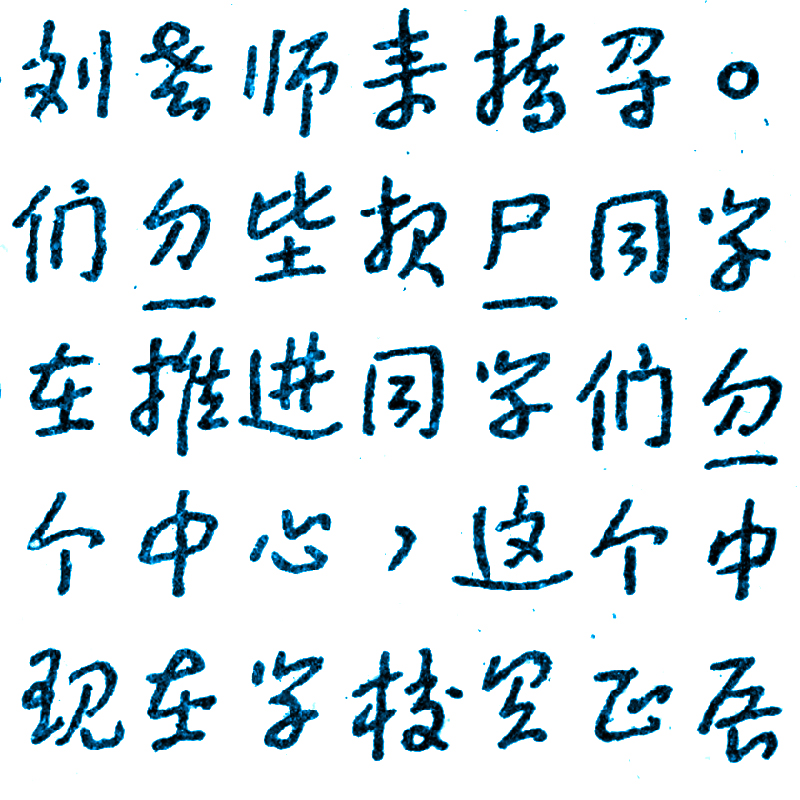
Language and script (2): Chinese writing and writing Chinese
Welcome back!
At the outset of Block 4, we will continue to explore the similarities and differences between language and script – especially as inspired by the progress made in your own coursework.
Also, as announced: it's assignment hand-in time again! Make sure to have your work ready and presentable, and to report any problems timely.
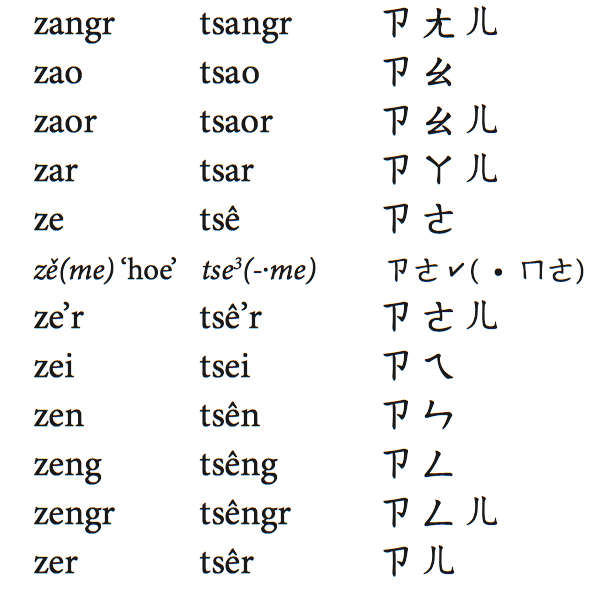 Texts
Texts
Wiedenhof (2015)
- from the Asian Library, on the linguistics handbooks shelves;
- as an e-book, through the University Library catalogue
Jeroen Wiedenhof, "The transcription of Mandarin"
In: A grammar of Mandarin.
Amsterdam: John Benjamins, 2015, pp. 414-428.
Availability at Leiden:
Wiedenhof (2005)
Jeroen Wiedenhof, "Purpose and effect in the transcription of Mandarin"
In:. 李哲賢 / Lee Jer-shiarn (ed. in chief), 2004 漢學研究國際學術研討會文集 [Proceedings of the International Conference on Chinese Studies 2004].
斗六 / Touliu: 雲林科技大學 / National Yunlin University of Science and Technology, pp. 387-402.
Assignments
Hand-in Assignment #2
Write a short first draft of your term paper. Hand it in, printed on paper, at the beginning of class on 25 March, or in my pigeonhole beforehand.
Please note the format format requirements.
- Maximum length: 2 sheets A4
- Please do not not write text about your paper, but text for your paper
Please keep the scope of this version restricted – you can always elaborate later.
Make sure you hand in at least two more draft versions during term.
The more versions you hand in, the more feedback you will get. For general hints on linguistic writing, see Writing on language.
My pigeonhole (at the Arsenaal building, first floor) is available for your (printed!) work at any time during term.
As mentioned in class: please feel free to discuss your plans and ideas, but do not wait until the last moment to make an appointment.
Bottomline: the preparations in Block 3 and the assignments of Block 4 are designed to turn the option of handing in your term paper by the last session in May (i.e. long before the official June deadline) into a realistic possibility.
– "Purpose and effect":
49. Read the text and bring your notes.
We will discuss your questions and remarks in class.
50. Section 2.1 mentions a modern (20th-century) instance of linguistic change in spoken Mandarin that is frequently overlooked.
In one or two sentences, write down how this situation came about.
– "The transcription of Mandarin":
51. Read the text and bring your notes.
We will discuss your questions and remarks in class.
52. In your own words, describe the difference between Character Pinyin and Linguistic Pinyin.
53. The transcription dilemma mentioned at the bottom of p. 419 is also addressed in the "Purpose and effect" text, in Section 2.2.
Please summarize this dilemma in your own words, clearly distinguishing phonetic, phonological and transcription issues.
By way of orientation, consider ways of filling out the blanks in the following table.
Language
Semantics
'Good shot!'
Phonetics
Phonology
Morphology
Syntax
...
...
Script
Chinese characters
好球!
Pinyin
Character Pinyin (CP)
Linguistic Pinyin (LP)
Wade-Giles
Yale
Bopomofo
...
...
...
...
...
...
FYI
Marmite update
As we saw, early European exploration in China was supported by developments in food technology.
A century later, the fate of Marmite serves to illustrate the dilemmas of the Brexit puzzle:
"Going Dutch" (in Dutch)
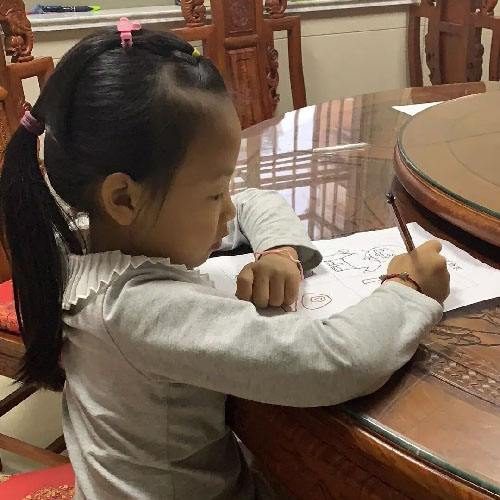
Brushes with power: Script and society
This week, we are finding out some facts from the fifties and sixties which helped shape the Chinese script's current destiny.
Texts
Handel (2013)
"Can a logographic script be simplified? Lessons from the 20th century Chinese writing reform informed by recent psycholinguistic research"
In: Scripta, Volume 5, 2013, pp. 21-66.
Kraus (1991)
"The failed assault on Chinese characters"
In: Richard Kurt Kraus, Brushes with power.
Berkeley: University of California Press, 1991, pp. 75-82.
Wiedenhof (2015)
"Features of the Chinese script"
In: Jeroen Wiedenhof, A grammar of Mandarin.
Amsterdam: John Benjamins, 2015,
§ 12.3, pp. 365-384.
Availability at Leiden:
- from the Asian Library, on the linguistics handbooks shelves;
- as an e-book, through the University Library catalogue
Assignments
54. Read all three texts and bring your notes.
We will discuss your questions and remarks in class.
– "Can a logographic script be simplified?"
55. We will discuss this article first, on a page-by-page basis, and on the basis of your remarks.
Cheyann, in view of your term paper preparations, you have a special responsibility here!
– "The failed assault on Chinese characters"
56. On p. 75 of Kraus' text, he notes the Korean use of "a more clearly phonetic" script instead of characters.
a. What is the name of this script? How and when did it come into being?
b. How "clearly phonetic" is it?
c. If the Chinese script is not "clearly phonetic", then how could it best be characterized?
[Item d added Thu 28 Mar 19 – Thank you, Cheyann!]
d. The phonetic nature of the native Korean script have engendered some enthousiasm about its qualities among linguists and educators.*)
For an example, see "In praise of: The world's best writing system, which states:
"it turns out that different writing systems are not all equally well equipped to capture the full range of a language’s grammar".
Give a concrete example of one grammatical feature, in a language of your choice, plus a writing system unequipped to capture that feature.
*) Apart from Korea's script, its language has likewise received distinguished praise, albeit by non-linguists, e.g. "Korean is, as a matter of fact, a very good language" in Kim Il Sung, "Problems related to the development of the Korean language", Works, Volume 18: January - December 1964, Pyongyang, Foreign Languages Publishing House, 1984, p. 17. (in BB "Course Documents")
57. Kraus' chapter repeatedly mentions John DeFrancis' work.
a. If you are not familiar with John DeFrancis' name:
do look up some details about his life and work.
b. On p. 78, Kraus states that "DeFrancis points out that..." without quoting a source.
Can you trace this citation?
c. Kraus paraphrases DeFrancis' statement that in the 1950s, "no one in China was willing to appear to challenge Stalin on this point".
On what point, exactly?
58. P. 81 shows a woodcut from a 1958 issue of the journal 中国妇女 Zhōngguó Fùnǚ "Women of China".
a. Can you identify the characters in this illustration?
b. Can you translate them? (
A friendly reminder: prepare all your answers in writing)
59. On p. 82, Kraus mentions a childhood memory from Chinese opera singer 新凤霞 Xīn Fèngxiá (1927-1998) featuring a "discarded cap of a fountain pen".
a. When and where were fountain pens invented? What writing tool(s) where they meant to replace or supplement?
b. When were they first used in China? What writing tool(s) did they replace, or supplement?
– "Features of the Chinese script"
60. The first paragraph of p. 365 describes what characters "consist of".
What consequences can this phrase "consist of" have in terms of linguistic methodology?
61. For each of the stroke-order principles in Table 12.5, try to find at least one exception.
62. For native speakers of Mandarin:
in Table 12.10, compare these letter names with your own pronunciation, and note down any differences.
63. In Table 12.11, can you think of punctuation marks which are missing?
64. At the bottom of page 371, what do the slashes transcribe in "the sound /s/"?
Can you write these three examples – cent, sent and scent – using the same transcription?
65. At the bottom of p. 372, please comment on the English translation "A book from the sky".
66. The small text of p. 375, mentions a "danger of circularity".
Please formulate this danger in two or three sentences of your own.
67. Some historical aspects of the character 年 are mentioned on p. 377.
What linguistic terminology is available to describe the relationship between 'millet', 'harvest' and 'year' discussed here?
68. Section 12.3.3 discusses the 六書 liù shū 'Six Categories of the Script'.
In his 2009 "Ludic writing" article, Wolfgang Behr proposes a highly original model for the analysis of the relationship written characters and linguistic signs.
This model, in his words (2009: 291)
"allows us to identify certain character structures beyond the coverage by the traditional “six scripts” (liùshū 六書) theory of the Hàn dynasty, [...] whose inadequacies have long been noted and discussed."
Can you give concrete examples (quoting individual characters) of such "inadequacies"?
69. Table 12.14 illustrates the large propertion of infrequent characters.
Can you identify one or more social factors which have contributed to the survival of infrequent characters?
 FYI
FYI
NPCW | New Perspectives on Chinese Writing
We aim to bring together:
Time: Monday, 20 May 2019, 10:30am to 5:00pm
- Expert accounts of new data
- Original results in script research
- Hands-on presentations of materials from special library collections
Venue: University Library, Vossius Room
Registration: Entrance is free but seats are limited; details at the Leiden University Library site.
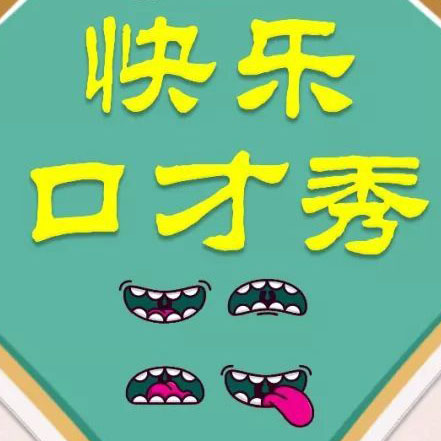
Term-paper presentations
Today's session will consist of three parts:
- Oral presentations:
Eight five-minute overviews, each introducing ongoing work on one term paper.
- Discussion of these presentations:
Feedback on research quesions, methodology, presentation styles and further prospects.
- Features of the Chinese script:
Your comments, and the remaining assignments from last week.
Oral presentation
On 8 April, as announced, a very short oral presentation will be expected of you about the subject of your term paper.Points of consideration:
- Your presentation will be in English
- Maximum duration is five minutes – please time yourself in preparation!
- Your target audience intelligent and interested, but not necessarily trained in linguistics or in Chinese. Fellow students from other departments may be invited to listen in.
- A short handout for the audience will come in handy, because it will save you time writing on the blackboard: please prepare 9 copies
- Powerpoints are allowed, but only after prior consulation (over email) – also note that setting up your system will cut into your five minutes!
Assignments
– "Features of the Chinese script"
Left over form last week's session: assignments 60 to 69. (now with correct numbering ;-)
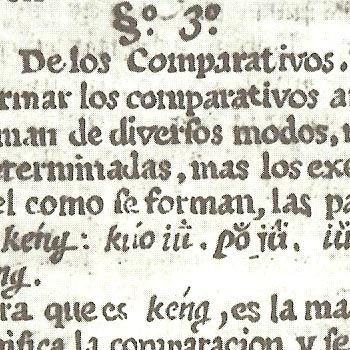
Language and script (3): Documenting Chinese
In week 2, we looked at 20th-century reforms and standardization, both in the spoken and in the written domain.
Throughout history, these two domains, language and script, have often been treated as indistinguishable: not just in the public eye, but also in learned treatments and official policies. Even today, a principled distinction between these two domains often remains the prerogative of linguistics.
This week provides some background to the interplay between present-day issues of script and language in China, with roots and causes dating back to late imperial times.
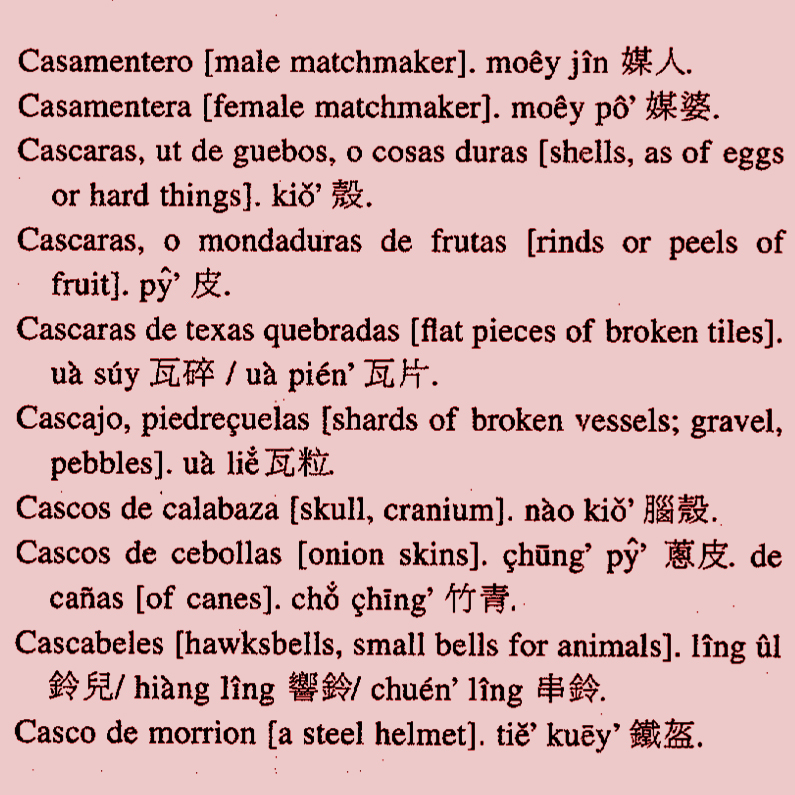 Text
Text
Coblin (2000)
W. South Coblin, "A brief history of Mandarin"
In: Journal of the American Oriental Society
Volume 120, no. 4, 2000, pp. 537-552.
Available online at the Leiden University Library.
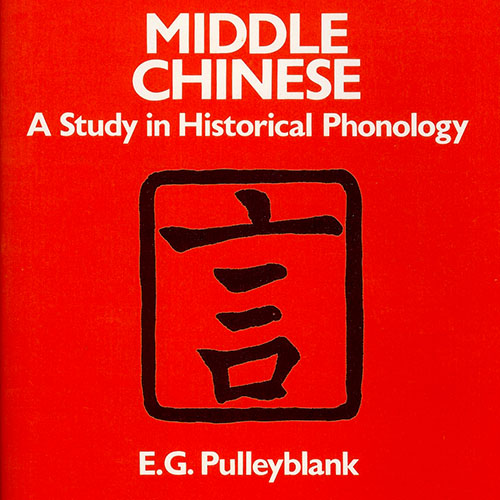 Background
Background
Pulleyblank (1984)
"The history of 'standard Chinese' "
"The phonology of Pekingese"
In: Edwin Pulleyblank, Middle Chinese
Vancouver: University of British Columbia Press, 1984.
- "The history of 'standard Chinese'" = pp. 1-4
- "The evidence for Old Chinese" = Chapter 2, pp. 41-59
Available from the Asian Library, on the linguistics handbooks shelves.
Assignments
Left over from week 2:
– "Features of the Chinese script"
assignments 60 to 69.
70. Check your progress with the term paper, and bring any questions to class.
– "A brief history of Mandarin"
As always, prepare your answers to all questions & assignments in writing.
Page numbers followed by a slash and the letter L or R (e.g. "p. 537/L") indicate the left or right column on the page.
71. Read the text and bring your notes.
We will discuss your questions and remarks in class.
72. Be sure to identify and look up linguistic terms as well as historical names & events you are unfamiliar with
– and/or to brush up your knowledge on these items.
73. Provide your own English translations for each of the book titles mentioned on p. 537/R.
In the remainder of the article, keep checking that you understand the titles of all works discussed.
74. As mentioned in Four tones (Middle Chinese), the 入 rù tone (p. 538/L) is labeled as "entering or checked" in English.
a. Please check the etymology of the Chinese term.
b. Can you guess how the English labels originated?
75. Please summarize the conclusion at the bottom of p. 538/R in your own words.
76. On p. 540/L, the Arte de la lengua mandarina and Vocabulario de la lengua mandarina by Francisco Varo are mentioned.
Check if modern editions of both these works are available – and if so, who are the editor(s).
77. On p. 542/R, it is explained that "the zhèngyīn system of ca. 1450 was based not on the pronunciation of a single dialect or area but was instead a composite entity".
a. What could be the reason that a purported linguistic standard is in fact composite in nature?
b. Cite both advantages and drawbacks of a standard of this nature for its speakers;
and for linguists of later generations.
c. Can you cite other (historical and/or modern) examples of composite linguistic standards in China?
78. As noted on p. 543/L, Jiǎng Shàoyú 蔣紹愚 has pointed out that for historical stages of Chinese, "spoken material has [...] been accessible only indirectly through the medium of the literary sources".
a. Please paraphrase this statement in your own words, and/or give an example.
b. Compare this state of affairs with the status of spoken materials in the description of the modern standard language as it arose in the twentieth century.
What sources for spoken Mandarin were linguists using in, say, the 1950s?
79. In the short abstract of this article (p. 537), it is explained that the text exposes a "flawed" view about the provenance of standard Mandarin.
a. Is there a difference in meaning between the terms
standard Mandarin as used here ("in its oldest sense", p. 537/L);
standard Chinese as used by Pulleyblank (1984: 1); and
Modern Chinese?
If so: please indicate the difference(s).
And if not: check if these terms differ in other way (e.g. style, user base, varieties of English)?
In linguistics as in any other branch of scientific research, flawed views are problematic only inasfar they cannot be falsified; otherwise, their very falsification helps science progress.
b. Give examples of flawed views in the field of language reconstruction (not necessarily Chinese) which have since been falsified.
c. Give examples of views in linguistics which cannot be falsified.
 FYI
FYI
Wénlín
Here is some information on the Wénlín software suite which was mentioned in a class presentation:
"Wenlin Software for Learning Chinese integrates a variety of tools for instant-access to more than 300,000 Chinese-English entries, 73,000 Chinese character entries, 62,000 English-Chinese entries, and 11,000 Seal Script entries.
Wenlin’s versatile and easy-to-use interface tackles the most frustrating obstacles for students, scholars, and speakers of Chinese.
Wenlin’s integrated solution runs on a variety of computer platforms (including Mac and Windows), and includes expandable Chinese dictionaries, a full-featured Unicode text editor, a flashcard system, pronunciation recordings, handwriting recognition, and much more."
For more information see the Wenlin Institute products page.
Formula One
The Formula 1 Heineken Chinese Grand Prix 2019 races are currently being organized in Shanghai, China.
The Shanghai International Circuit (which has various Chinese names, e.g. 上海国际赛车场 Shànghǎi Guójì Sàichēchǎng) was purpose-built for Formula One racing events.
This race circuit's tracks were designed to produce a bird's-eye view of a gigantic character 上 shàng 'up' (as in 上海 Shànghǎi).
Can you think of other examples (in China or elsewhere) of architectural or artificial-landscape outlines which are borrowed from or inspired by script forms?
生僻字 Shēngpì zì
No class today
Easter Monday

From bones to bytes: The digital revolution
As we saw, the earliest extant specimens of Chinese writing are preserved in hard materials: bones, shells and bronze. Yet the characteristic looks of the character script were determined by soft and flexible materials: brush, paper and silk.
After the 10th century, new printing techniques created a boost in the transmission of science, literature and the arts. Movable type became cost-effective much later, after the steam engine allowed mechanization in the late 19th century.
In terms of "material" culture, the digital revolution is perhaps the most radical development in the history of the Chinese script, and of scripts generally. In terms of documentation and analysis, we will examine an overview and consider a number of special angles.
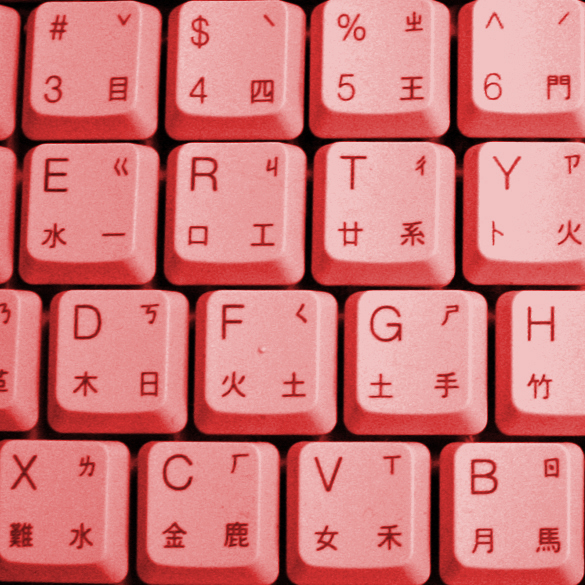 Texts
Texts
Wiedenhof (2015)
"The digital revolution"
In: Jeroen Wiedenhof, A grammar of Mandarin.
Amsterdam: John Benjamins, 2015,
§ 12.5.2, pp. 402-406.
Availability at Leiden:
- from the Asian Library, on the linguistics handbooks shelves;
- as an e-book, through the University Library catalogue
Apple (2017)
[Apple] Handwriting Recognition Team, "Real-time recognition of handwritten Chinese characters spanning a large inventory of 30,000 Characters"
Machine learning journal,
Volume 1, Issue 5, September 2017
 Background
Background
Russell (2016)
"Signing off: Finnish schools phase out handwriting classes"
The guardian, 31 July 2015.
Hilburger (2016)
Christina Hilburger, "Character amnesia: An overview"
In: Victor H. Mair, ed., Sinitic language and script in East Asia: Past and present
Sino-Platonic papers, Number 264, December 2016, pp. 51-70.
Reading notes
–"The digital revolution"
80. The reference quoted here is Halpern and Kerman's "Pitfalls & Complexities" article, available from the CJK Dictionary Institute's website.
–"Real-time recognition"
81. In the introduction, if you wonder what "convolutional neural networks (CNNs)" are: don't worry, they will be illustrated in the next section.
Or if you can't wait: here's a clever introduction. And note the human angle: CNNs "take a biological inspiration from the visual cortex".
Assignments
Assignment heads-up
On Monday, 6 May (Block 4, Session 7), a near-final draft of your term paper will be expected.This draft will be assessed as Hand-in Assignment #3.
82. Read both texts and bring your notes.
We will discuss your questions and remarks in class.
– "The digital revolution"
83. As mentioned on p. 402, there are "persistent issues" in the conversion of characters between digital standards (compare the Reading Notes)
The notion of conversion, e.g. from 貝 to 贝, or vice versa, involves more than just a distinction. Conversion also denotes a degree of identity between the object and the result of the conversion. In this example, there is also a certain sameness between 貝 and 贝.
This leads us back to the linguistic leitmotiv of our course on scripts, and a consideration which will be relevant to many (if not all) of your term papers.
Whether we are linguists or not, the analyis of scripts requires a statement on the position allotted to language – "language" in the technically strict sense of the spoken (not the written) medium.
For this example:
a. Can we establish the degree of identity between 貝 and 贝 without reference to language? And between between 後 and 后?
b. How can we do this?
84. The character 与 "with a horizontal stroke crossing the downward hook, has increased in popularity within the Chinese script" (p. 403).
When you look at the previous sentence (i.e. here, on this webpage) is the horizontal stroke crossing the downward hook, yes or no?
85. The software illustrated in Figure 12.24 (p. 406) was referenced above.
The following is an experiment, not a contest.
a. Note down (strictly individually, and without consulting any dictionary) how many characters you know actively among the ten characters displayed in Figure 12.24.
Here, "actively" means that:
- you can pronounce the character's reading in one Sinitic language of your choice
- and you know a corresponding meaning, i.e. a meaning in that same language
We will compare the results statistically in class, comparing numbers between 0 and 10.
b. Write down at least three factors which may influence the result of this comparison.
– "Real-time recognition"
86. To which scientific domain(s) does this text belong?
87. Imagine you are an aspiring sino-techie applying for a job in a software company.
Describe at least one specialist asset that you bring to the firm thanks to your training in the Humanities.
88. The Introduction mentions the phrase "underlying character inventory".
The term underlying suggests a conversion, but this type of conversion differs from the one above.
In the context of the Apple article, what are the object and the result of the conversion?
89. In the section on "System configuration", we have a character of 48x48 pixels.
a. In terms of resolution, is this currently a realistic average? (–on screens? –in print? –in other domains?)
b. For fluent reading, what is the minimally required (square) resolution for Chinese characters?
90. In the same section, the number 30,000 is mentioned for
"one node per class, e.g., 3,755 for the Hànzì level-1 subset of GB2312-80, and close to 30,000 when scaled up to the full inventory"
The text that follows will mention "30,000 characters".
In your own words, what is the difference between 30,000 nodes per class and 30,000 characters?
91. The same number re-emerges in the title of the next section, "Scaling up to 30K characters".
a. What type of interests drove this feat of engineering?
b. How does the number of 30,000 compare to the numbers of characters usually addressed in educational, political and/or social domains?
92. The same section distinguishes a "character inventory" from "[r]endered fonts".
In your own words, what is the difference?
93. Compare the headings of Figures 2, 3 and 4 with the first sentence below Figure 4.
What is the difference between "cursive" and "unconstrained" variants (i.e. "variations")?
94. Figures 7 presents "Similar shapes of U+738 (王) and U+4E94 (五)".
a. For the characters 王 and 五, can the corresponding handwritten forms be completely identical, or will these two always be distinguished?
b. If you do not know the answer to a., describe two different methods to solve this question (you do not need to actually perform these steps).
FYI
|
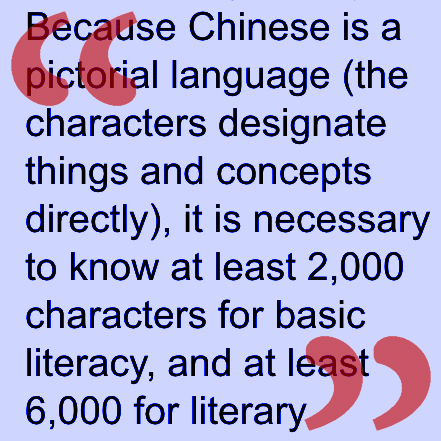 |
.jpg)
The future of Chinese writing
Longevity is perhaps the most striking feature of Chinese writing.
As we have seen, longevity requires a great deal of adaptability. Throughout the history of writing in China, shifts in form and function have been affected by – and have feed back into – material, social, cultural, political, economic and educational circumstances.
Extraordinary longevity also inevitably raises the question what the future will bring.
Overview
A number of milestones in the development of Chinese writing have passed in review over the last few weeks, roughly in chronological order.
 For the final laps of our course, here is what is left in store:
For the final laps of our course, here is what is left in store:
Today (session 7)
Our gaze into the crystal ball starts where we left off last time, with the background readings of that session serving as our primary focus for today.
- Your last hand-in assignment (#3) is also due. In the context of your term paper, this will also be the last opportunity to share remaining issues for discussion in class.
Next week (session 8)
- Our insights in material culture will be strengthened through a hands-on excursion in the ethnographical depot of Leiden's Museum Volkenkunde.
- That final session also features an (anonymous) student evaluation of this class. Your feedback help us improve future runs of this course.
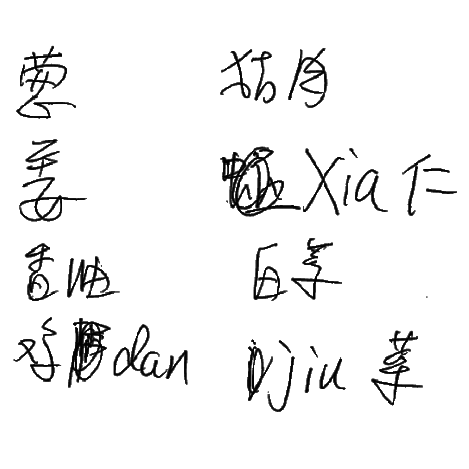 Texts
Texts
Hilburger (2016)
Christina Hilburger, "Character amnesia: An overview"
In: Victor H. Mair, ed., Sinitic language and script in East Asia: Past and present
Sino-Platonic papers, Number 264,
December 2016, pp. 51-70.
Russell (2016)
"Signing off: Finnish schools phase out handwriting classes"
The guardian, 31 July 2015.
Background
Almog (2018)
Reassessing the evidence of Chinese "Character amnesia"
SOAS University of London, 2018
Accessible online through the University Library catalogue
Assignments
Hand-in Assignment #3
Write a near-final draft of your term paper.
Hand it in, either in PDF or printed on paper, on or before Monday 6 May.
Please note the format format requirements.
96. Note down any remaining issues related to the progress in your term paper.
If you want, you can share your experiences as well as your doubts for discussion in class.
97. Read both texts and bring your notes.
We will discuss your questions and remarks in class.
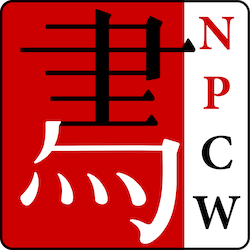 FYI
FYI
Beyond the context of this course (in case your sinographic appetite has not yet been satisfied ;-) you are most welcome to join the symposium on Chinese writing which will be held here at Leiden on the Monday following our last session of this term.
NPCW | New Perspectives on Chinese Writing
We aim to bring together:
- Expert accounts of new data
- Original results in script research
- Hands-on presentations of materials from special library collections
Time: Monday, 20 May 2019, 10:30am to 5:00pm
Venue: University Library, Vossius Room
Registration: Entrance is free but seats are limited.
Today's session consists of three parts:
(1) Optional hand-in of your term paper:
As announced, you may hand in your paper and conclude your course today.
Alternatively, you can take some more time and hand in your paper by the official deadline (see details).
(2) Excursion:
We start at the usual time, but out venue is in the Volkenkunde museum
We will meet each other at the entrance of the Boerhaave building
This buiding is on your left, immediately after you enter the iron gates. | Click map to enlarge
Steenstraat 1
2312 BS Leiden
(3) Course evaluation:
As part of the last session of the course, Leiden University organizes a formal student evaluation. The evaluation process takes 5 to 10 minutes. It is anonymous and confidential (see details).
Apart from this formal exercise, any comments and suggestions that you wish to share about the format and contents of this course are most welcome.
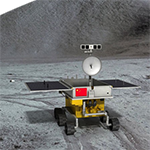

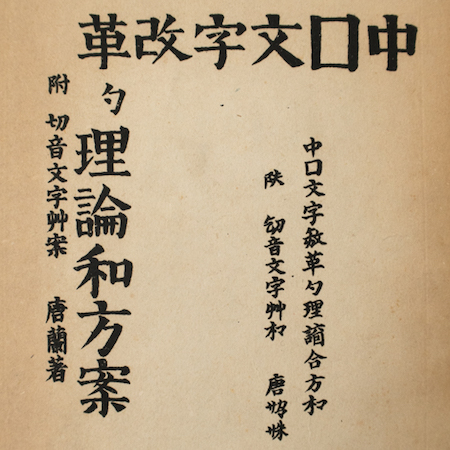
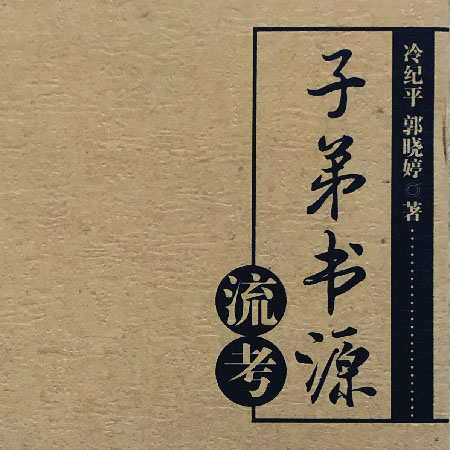
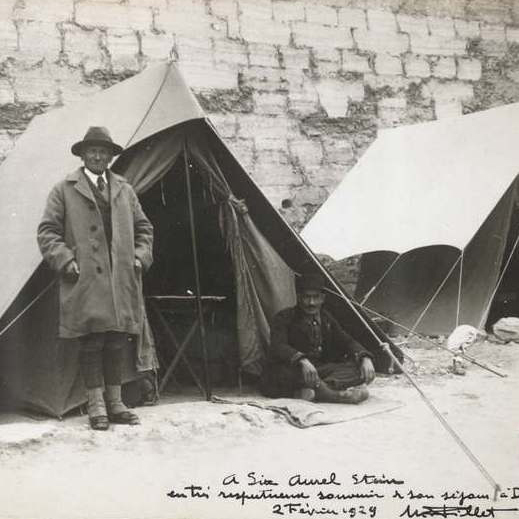
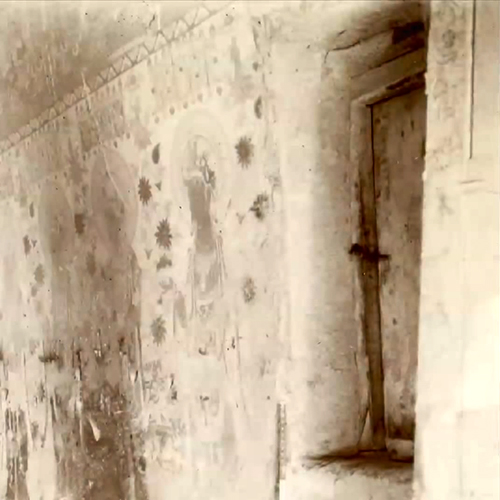
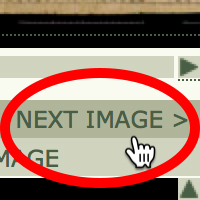
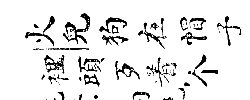



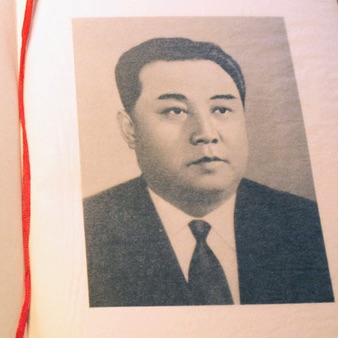
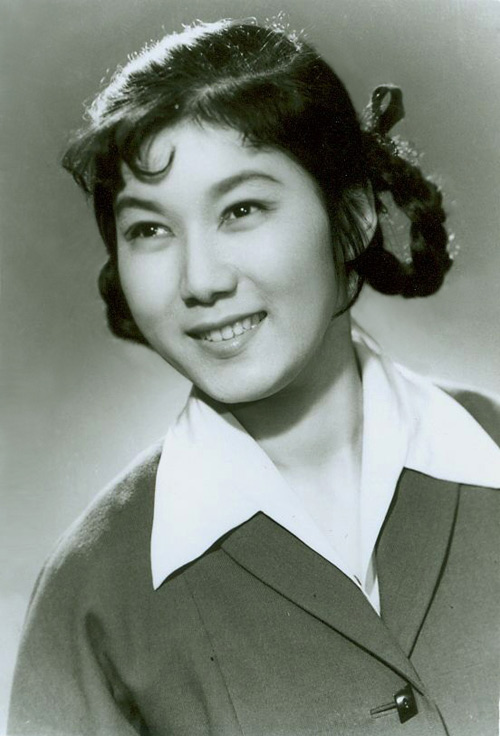
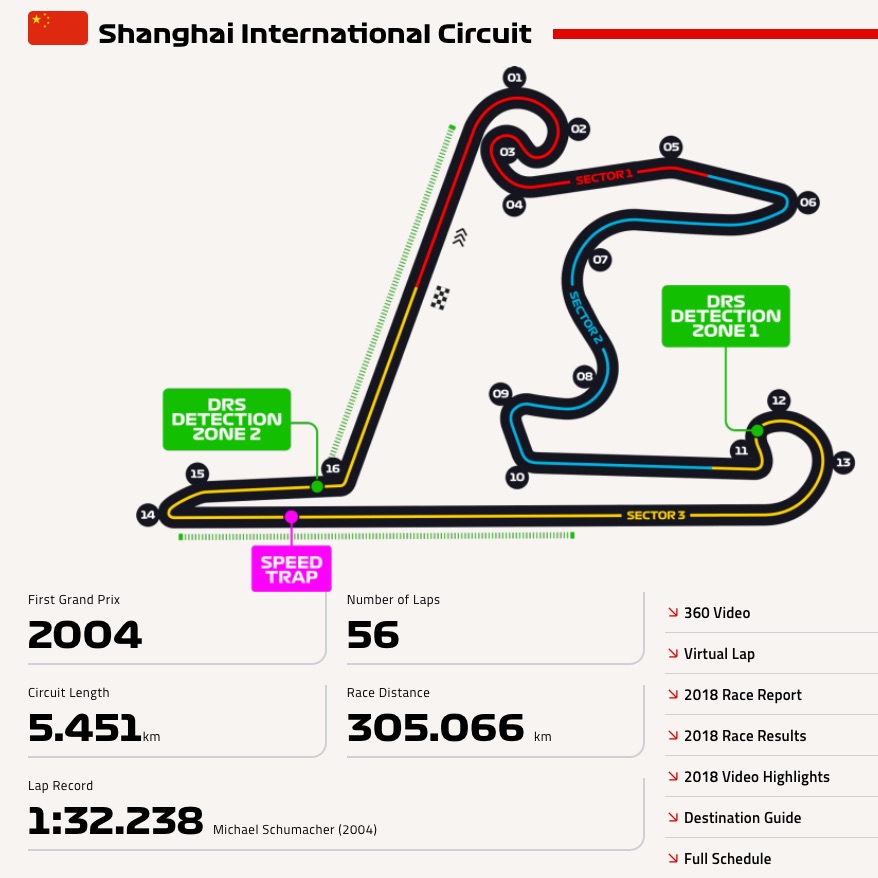
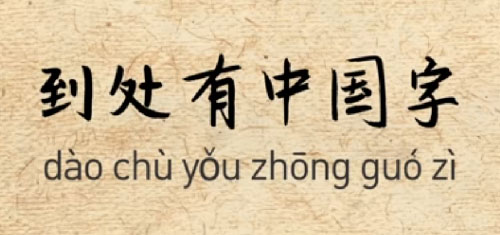
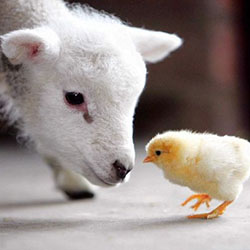
.jpg)
